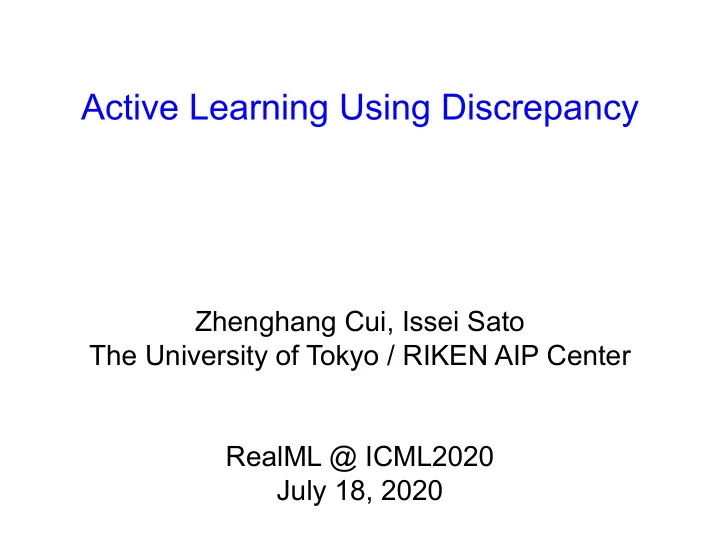

Active Learning Using Discrepancy Zhenghang Cui, Issei Sato The University of Tokyo / RIKEN AIP Center RealML @ ICML2020 July 18, 2020
2 (Pool-based) Active Learning ■ Given: ● a pool of unlabeled data ● a labeling oracle ■ Decide for each step: ● query batch of unlabeled data ■ Goal: a classifier for all data ● not only for queried data
3 Deep Batch Active Learning ■ New requirements: ● Using deep neural network classifiers. ● Large query batch for each step. ■ Traditional active learning theory can hardly help. ■ Selecting batch with diversity and representativity: ● [Sener and Savarese, ICLR, 2018] on corsets ● [Ash et al., ICLR, 2020] on loss gradients ● …... ■ Unified method ● [Shui et al., AISTATS, 2020] on the Wasserstein Distance
4 Proposed Method using Discrepancy ■ Consider two distributions: ● P: all data Q: queried data ■ With two functions f and f’, we minimize the error bound on P established using ■ Lemma 3 (informal): ● Above discrepancy is upper bounded by the Wasserstein Distance.
5 Experimental Results ■ Fashion-MNIST Dataset [Xiao et al. 2017] ■ 10 repetition under same setting as SOTA ‘WAAL’ [Shui et al., AISTATS, 2020].
6 Thank you!
Recommend
More recommend